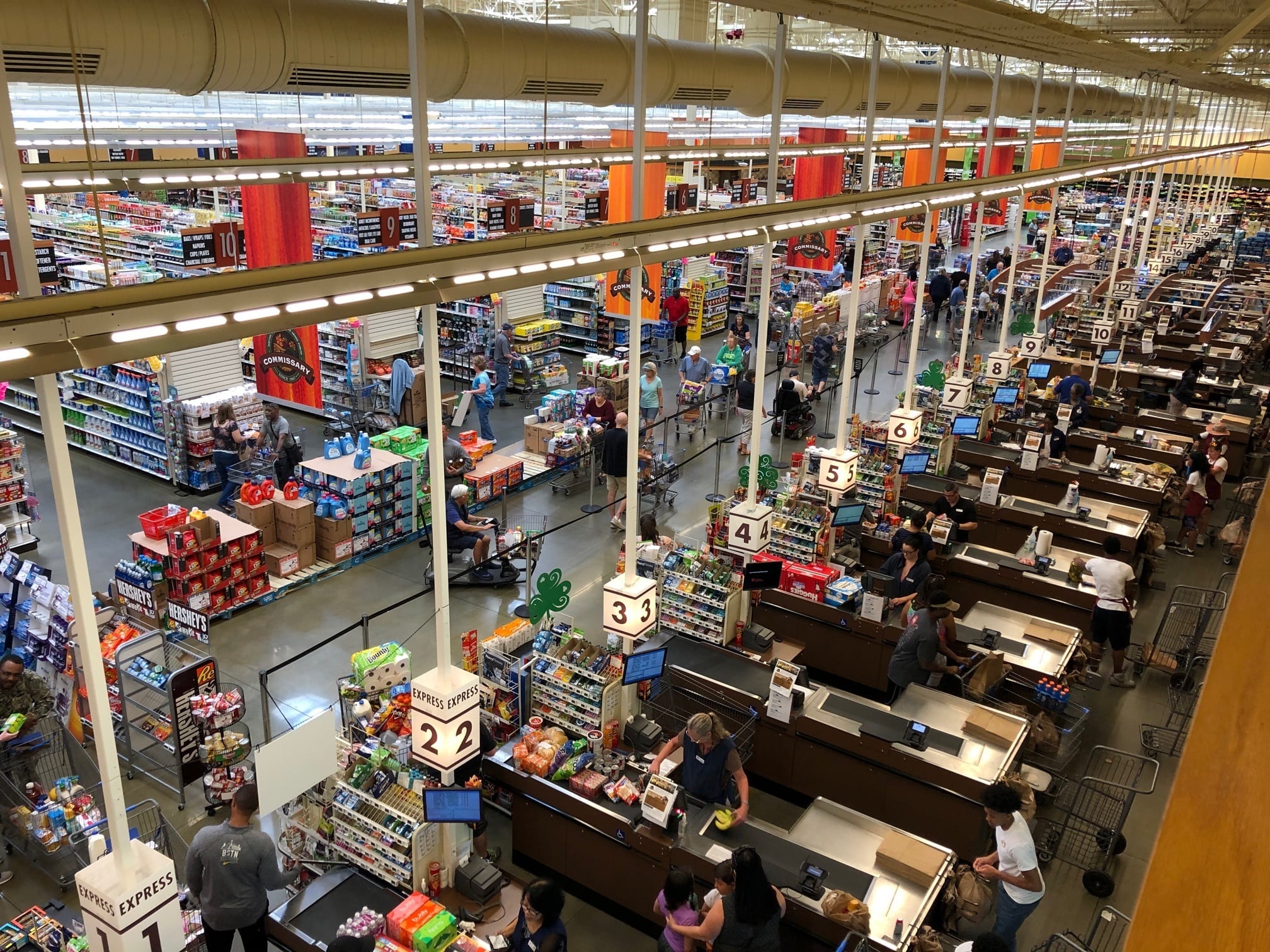[Editor’s note: This story has been updated to correct the amount added to the commissary’s budget by House lawmakers.]
The military commissary system is suffering from an identity crisis, according to government auditors. Are military stores a benefit or a business?
The two primary objectives of the Defense Commissary Agency are competing against each other — providing a benefit to service members through savings on groceries, yet operating like a business and marking up prices to reduce the amount of taxpayer dollars it requires, according to a Government Accountability Office report released Tuesday.
Defense Commissary Agency officials agreed there is an “inherent tension” between maintaining customer savings and generating a profit margin, and that “DeCA likely cannot meet both the target of 23.7% savings rate and reduce its reliance on appropriations through margin as intended,” the report stated.
The auditors also raised questions about the way commissary savings are calculated, the amount of savings customers are actually getting, and how reforms have affected those savings. Congress and DoD decision makers “don’t have the assurance that DeCA is meeting its savings target and that commissary customers are reliably receiving their intended benefit,” auditors found.
DoD and Congress need to clarify the benefit the commissary should provide, auditors stated. Savings for commissary customers in the continental U.S. have been consistently lower than the global target of 23.7%. In 2021, the CONUS commissary savings rate was 17.7% compared to commercial retailers outside the gate. And the overall global savings rate missed the 23.7% target in 2021, with an overall savings rate of 22.5%.
“In this time of rising prices and DoD efforts to reduce food insecurity, the ability of DeCA to provide service members, their families and retirees reduced-price groceries is especially important,” the auditors stated.
DeCA also needs to fix the way it calculates savings for commissary customers overseas, auditors said. While the method for calculating CONUS savings is reliable, auditors said, they described the current overseas method as both “unreliable and inaccurate.” Stateside commissary customers account for 81% of commissary sales worldwide, and get consistently less than 23.7% savings overall. But the overseas savings rate has consistently been calculated at 42% or higher, which the GAO says is an unreliable number, Moreover, the global commissary savings average gets propped up by the savings numbers in the overseas commissaries. DeCA only meets its global target by relying on the savings rate in commissaries outside the U.S.
The commissary agency’s calculated customer savings rate for fiscal 2021, with weights:
| Fiscal 2021 sales | Weight | Savings rate | |
|---|---|---|---|
| Continental U.S. (CONUS) | $3.3 billion | 80.7 | 17.7% |
| Overseas (OCONUS) | $777 million | 19.3 | 42.5% |
| Global | $4 billion | 100 | 22.5% |
| Source: Defense Commissary Agency/GAO |
Commissary officials changed to a savings calculation method using the overseas Cost of Living Allowance in 2017, because a consulting firm hired to support their business reforms, Boston Consulting Group, advised them to do so. So the commissary agency has been relying on data associated with the COLA to calculate the savings rate OCONUS, although the COLA reflects more than just the price of groceries bought in overseas locations, the auditors stated.
Commissary reforms have affected savings
Some reforms DoD started implementing in the commissary agency in 2017 have been in competition with customer savings, auditors noted. Before that time, by law, commissaries sold products at cost plus a 5% surcharge, so that the cost of operating commissaries wasn’t included in the price customers paid. The commissary system received about $1.7 billion in taxpayer dollars in 2012 to operate the stores, but over the past several years it’s been about $1.2 billion. The 5% surcharge customers pay is used primarily for renovation and construction of stores.
Since 2017, the agency has used variable pricing, a pricing method used by commercial grocery stores to set prices over the cost of the product, thereby generating a profit margin. The goal is to create some profit margin in order to reduce the amount of taxpayer dollars that are used to operate commissaries.
Therein lies the conflict. GAO auditors noted that “lowering prices to increase savings decreases DeCA’s margin, while raising prices to generate a greater margin reduces customer savings.”
Family advocates have questioned the system of marking up commissary prices, noting that in the past, customers could rely on the price of their commissary products across the board to be at the cost from the supplier plus 5%. “Now isn’t the time to try to turn a profit, especially with the high inflation and supply chain issues,” said Kelly Hruska, government relations director for the National Military Family Association.
She said she appreciates GAO’s deep dive into the issue. “Families are struggling. We need to be looking at every area where we can save families money,” she said.
Lawmakers have asked DoD to stop requiring commissaries to generate a profit, in order to provide some relief for military families from rising food prices.
The commissary agency needs to analyze the tradeoffs associated with meeting one of these competing objectives over the other, auditors said. That will help Congress make informed oversight decisions to provide clear direction on how to best provide the benefit. Those tradeoffs would specifically identify the customer savings rate and related benefits, such as the number, location and operating hours of commissaries. They also recommended DeCA improve its strategic plan; the current plan is lacking in key business reform efforts and lacks information needed to implement and measure success, auditors found. In its response to GAO, DoD officials agreed with the recommendations.
A provision passed by the House Armed Services Committee would add another $500 million to the commissary budget for fiscal 2023. It must make its way through the legislative process, but it would help the commissary agency avoid tradeoffs to provide the benefit for the troops, said Steve Rossetti, president of the American Logistics Association, an organization whose members include suppliers to commissaries and exchanges. That congressional action “would solve a key problem identified by the GAO,” he said. “The committee recognized that tradeoffs shouldn’t have to be made, especially in an era of inflation and food insecurity.”
Pointing to the need for more documentation about the success of commissary reforms, GAO auditors noted that commissary sales have fallen by more than $1 billion over the past six years — from about $6 billion in fiscal 2015, to about $4.4 billion in FY 2021 — as those reforms were being implemented. Currently, only 1.5 million out of 8 million eligible customers shop at the commissaries regularly.
“It is clear that the reform efforts imposed upon DeCA have failed to achieve the desired results,” said Tom Gordy, president of the Armed Forces Marketing Council, which represents more than 400 manufacturers who supply goods to military stores. “From the beginning, DeCA was put in a no-win situation, and those most adversely affected in this experiment have been military families who need the savings the most.”
Karen has covered military families, quality of life and consumer issues for Military Times for more than 30 years, and is co-author of a chapter on media coverage of military families in the book "A Battle Plan for Supporting Military Families." She previously worked for newspapers in Guam, Norfolk, Jacksonville, Fla., and Athens, Ga.





